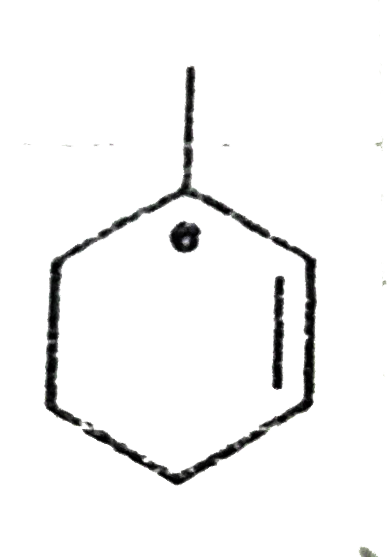Assertion : A free radical is paramagnetic species.
Reason : A free radical is formed in homolytic fission of covalent bond.
Video Solution
Text Solution
Correct explanation. Free radicals have odd number of electrons in the valence shell and hence are paramagnetic.
|
Updated on:21/07/2023
Related Playlists
- BOOK - PRADEEPCHAPTER - ORGANIC CHEMISTRY-SOME BASIC PRINCIPLES TECHNIQUESEXERCISE - Competition Focus (Jee (Main and Advanced)/Medical Entrance) VII. Numerical Values Type Questions1videos
ORGANIC CHEMISTRY-SOME BASIC PRINCIPLES TECHNIQUES
- BOOK - PRADEEPCHAPTER - HYDROGEN EXERCISE - COMPETITION FOCUS (Assertion-Reason Type Questions) Type 215videos
HYDROGEN
- BOOK - PRADEEPCHAPTER - P-BLOCK ELEMENTS (NITROGEN FAMILY)EXERCISE - Competition focus jee(main and advanced)/ medical entrance special) (VIII. Assertion-Reason Type Questions)10videos
P-BLOCK ELEMENTS (NITROGEN FAMILY)
Similar Practice Problems
- Question 1 - Select One
A free radical is a chemical species which is
Aelectron dificient and electrically neutralBelectron dificient and positively chargedCelectron rich and negatively chargedDelectron rich and electrically neutral - Question 1 - Select One
Free radicals are formed through
AOxidationBReductionCHydrolysisDSynthesis - Question 1 - Select One
The least stable free radical is
ACH3⋅CH2BCH3CH2⋅CH2C(CH3)2⋅CHD⋅CH3 - Question 1 - Select One
In Homolytic fission of covalent bond ____ is formed
AcationBanionCionDfree radical - Question 1 - Select One or More
In which cases, free radicals can be formed by homoytic fission?
AH3C−O∣∣C−CH3hv−−→BR−N=N−Rhv−−→C DCH3−O−O−CH3hv−−→
DCH3−O−O−CH3hv−−→ - Question 1 - Select One
The most stable free radical is
AC6H5−C6H5∣C∘∣C6H5BCH3−CH3∣C∘∣CH3CCH3CH2CH∘CH3DCH3CH2CH2C∘H2 - Question 1 - Select One
The most stable free radical is
A B
B C
C D
D
- Question 1 - Select One
Assertion : Free radicals are short lived and highly reactive.
Reason : Free radicals are highly unstable.AIf both assertion and reason are true and the reason is the correct explanation of the assertionBIf both assertion and reason are true and the reason is not the correct explanation of the assertion.CIf assertion is true but reason is false.DIf the assertion and reason both are false. - Question 1 - Select One
Free radical has electron
AUnpaired and extremely reactiveBPaired and extremely inactiveCUnpaired and extremely inactiveDPaired and extremely reactive. - Question 1 - Select One
Free radicals can undergo
Arearrangement to a more stable free radicalBdecomposition to give another free radicalCcombination with other free radicalDall are correct

